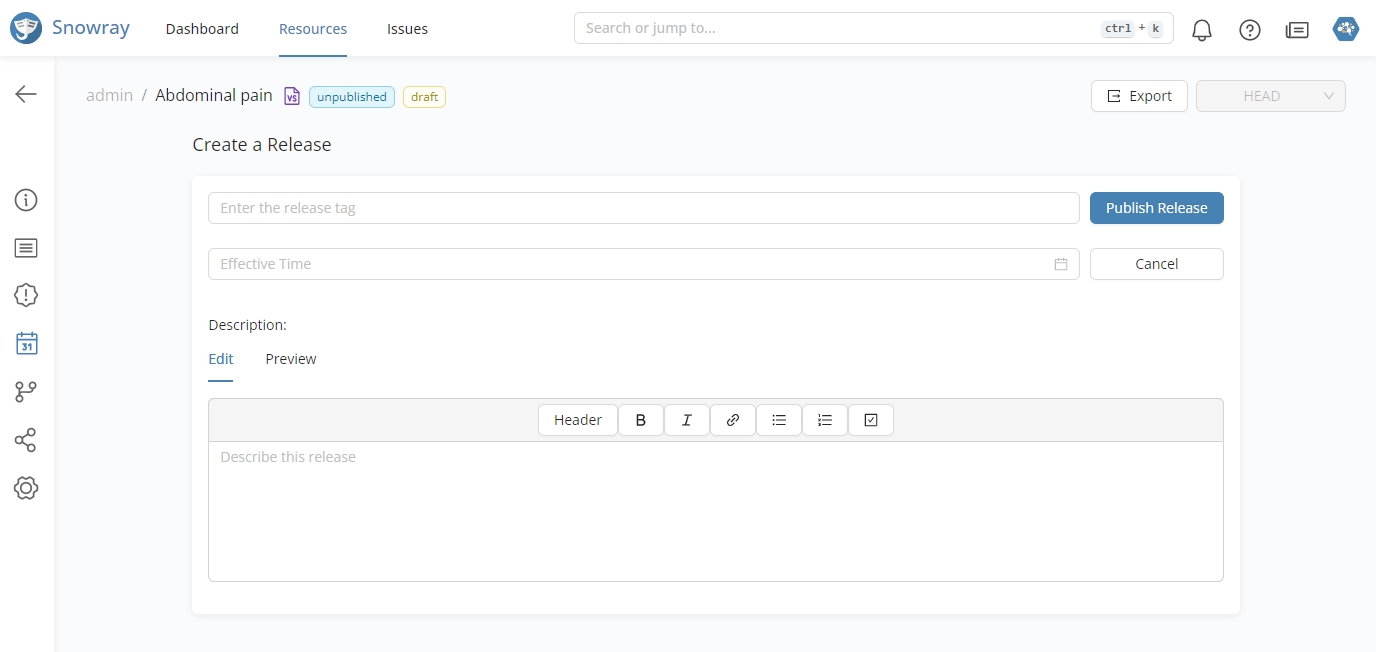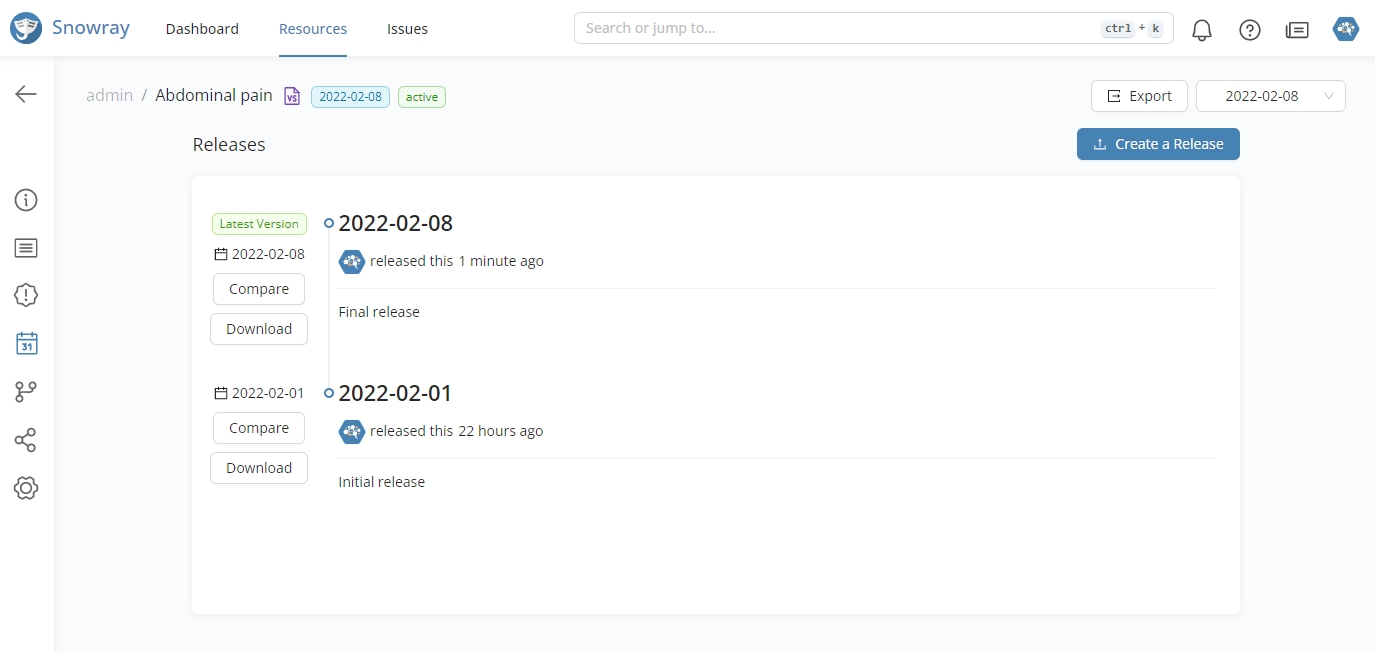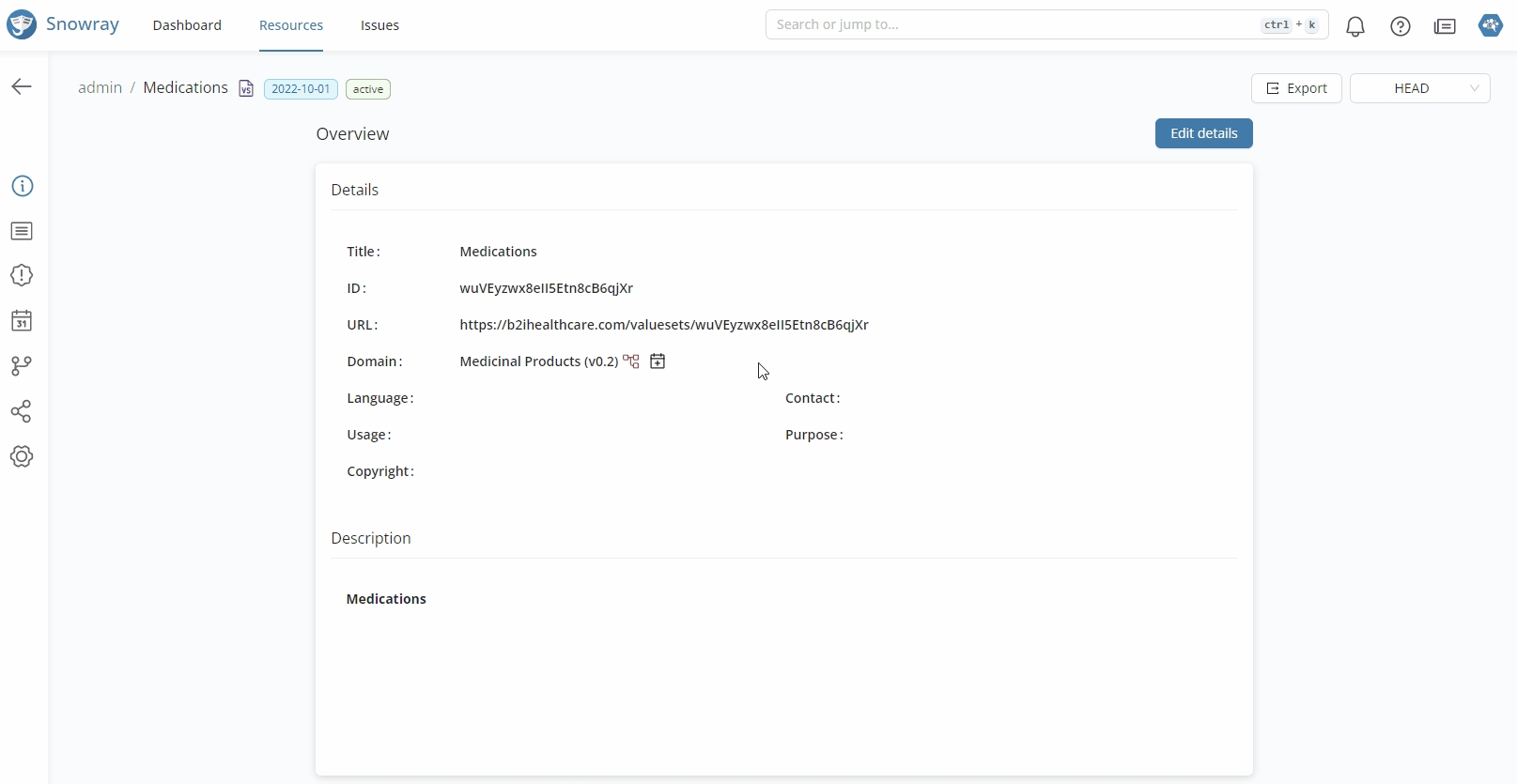Release Management
Release a Value Set
Once a Value Set is considered to be complete, its content can be released.

Browse Releases
Selecting a Value Set from the resources navigates users to its Overview tab.
Each release holds the following properties: release tag, effective time, the author's avatar, and a description (if specified upon creation). In addition, a green tag on the left-hand side of the timeline indicates the latest release.

Download Releases
Release processes sometimes require producing a file to be able to share content with other organizations or within the team.
Snowray supports four different types of export formats: RF2, XML, TSV, and FHIR.
A loading indicator will be displayed while the system is preparing the file.

Once the export file is ready, the indicator will be updated accordingly and the download process will start in the browser.

Migrate to a New Dependency
If the domain of the resource has a more recent release, users have the option to migrate the definitions to the newer Code System version from the Overview tab.

This replaces all inactivated content with their known active substitutes as well.
Migrating to a new dependency can cause incorrect clauses. Check the definitions of the Value Set after the migration to see the potential issues.
Was this helpful?
